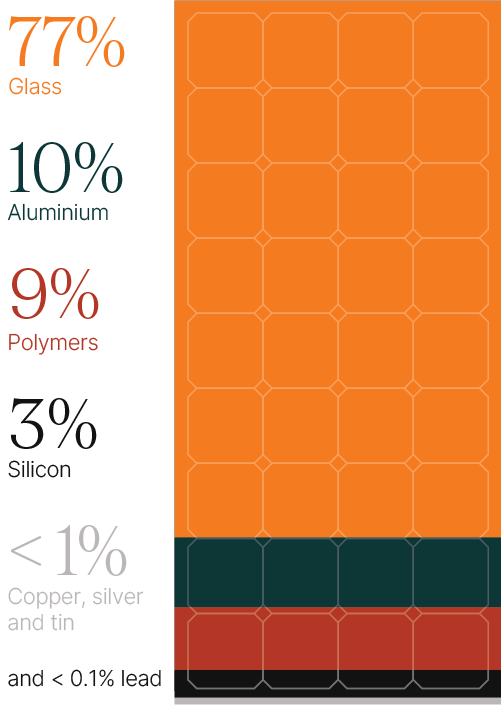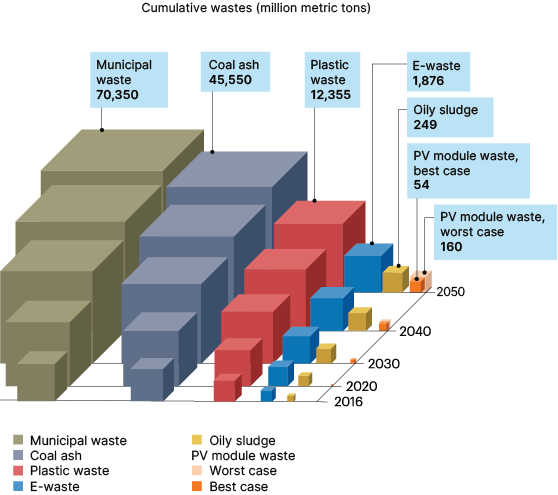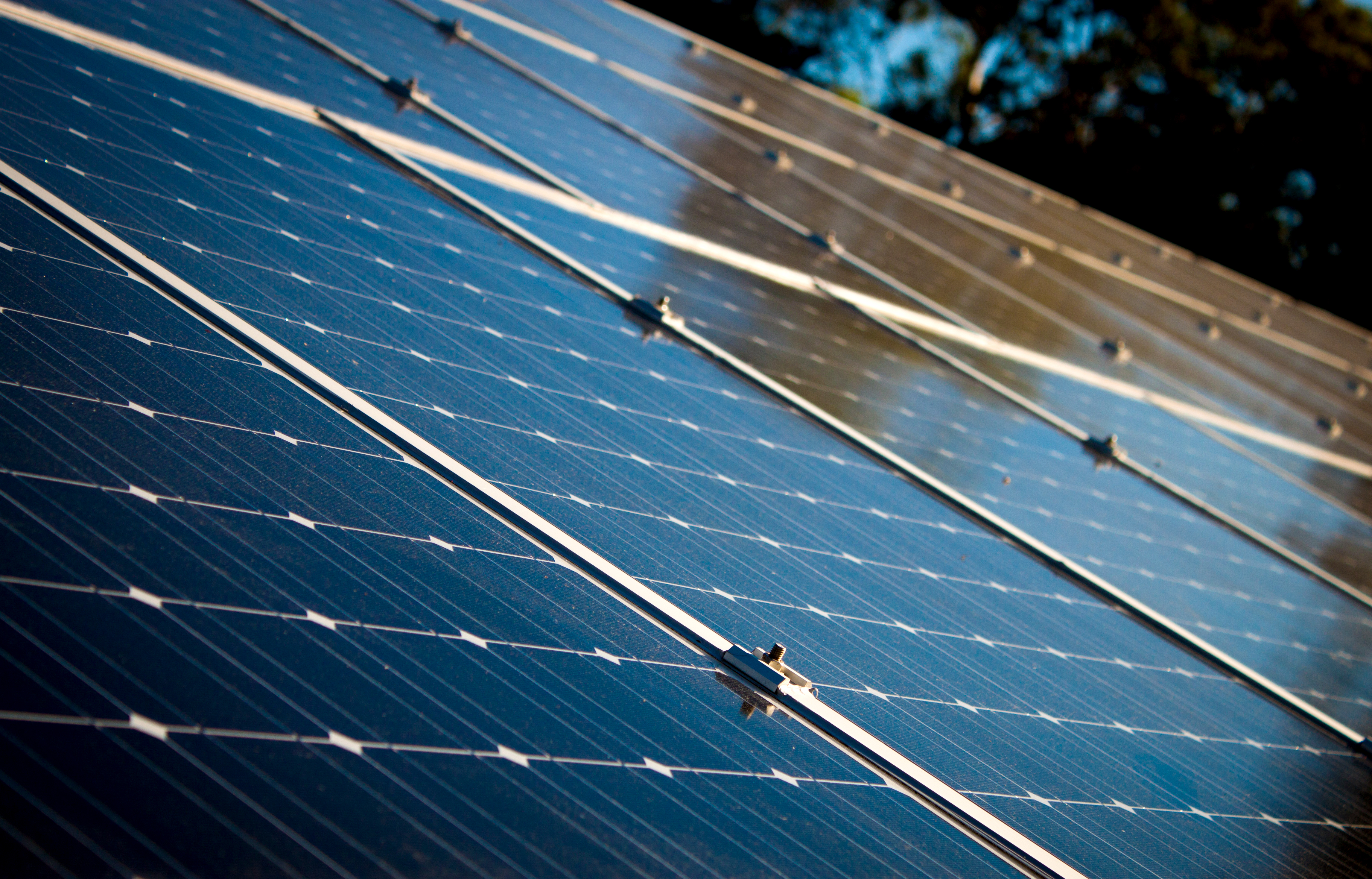
What is the lifespan of a solar panel?
Large-scale photovoltaic (PV) solar panels generally have a design life of 25 to 30 years and will naturally degrade or lose their efficiency over time. Panels are expected to still produce 85% of their original capacity at 30 years.
Are solar panels recyclable?
Photovoltaic solar panels consist of 95% recyclable materials, including aluminium, glass, silicon, silver, copper, indium and germanium.
What parts of a solar panel can be recycled?
Up to 17% of a solar panel, by weight, can be recycled in Australia and other components can be off-shored for recycling. The A panel’s aluminium frame and junction/terminal box, which houses the electrical connections, are the most common components to be recycled. Establishing domestic PV waste management facilities in Australia presents an opportunity for resource recovery.
What materials are solar panels made of?
The vast majority of photovoltaic solar panels are either crystalline silicon or cadmium telluride. Crystalline silicon PV modules are 77% glass, 10% aluminium, 3% silicon, 9% polymers with less than 1% copper, silver and tin and less than 0.1% lead.
Solar panels are made of:

Are there health concerns with commercially produced PV modules?
The International Energy Agency confirmed the only potential human and environmental concerns in commercially produced PV modules are the trace amounts of lead in the solder of modules. That is the material used to join the panels together. Many manufacturers are seeking to adopt lead-free solders.
Solar panels are an Australian invention and already are installed on more than 4 million homes and businesses, nationally.

Are there any Australian facilities recycling solar PV modules?
There are now several solar PV recycling facilities that work to recycle end-of-life solar PV modules. This includes all associated materials such as cables, inverters, mounting structures and optimisers while using no chemicals.

Fig. 1 | Global cumulative wastes from 2016 to 2050. We compare best-case and worst-case scenario PV module waste estimates to municipal waste, coal ash, plastic waste, e-waste, and cumulative oily sludge from crude oil production (assuming constant annual waste generation at present rates) in million metric tons. Best-case scenario represents long-lived, high-quality modules, whereas the worst-case scenario represents regular-quality modules with below average lifetimes.
Source (p1376): Unfounded concerns about photovoltaic module toxicity and waste are slowing decarbonization | Nature Physics
How does solar panel waste compare with fossil fuel waste?
The toxicity of solar module waste is much lower than coal ash or oil sludge (fossil fuels). Research shows the world produces the same amount of coal ash per month as the amount of PV module waste expected to be produced over the next 35 years.
Research shows the world produces the same amount of coal ash per month as the amount of PV module waste expected to be produced over the next 35 years.

